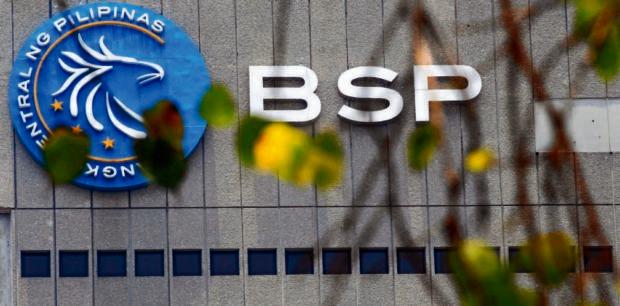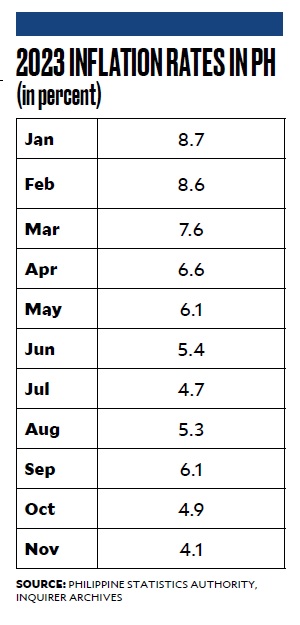BSP target in sight as Nov inflation slows to 4.1%

MANILA -Inflation softened for the second straight month in November and may further ease despite the typical surge in consumption in December, giving the government better chances of finally bringing back price growth back to its target.
Inflation, as measured by the Consumer Price Index, eased to 4.1 percent year-on-year last month, a milder uptick compared to the 4.9 percent price growth recorded in October, the Philippine Statistics Authority (PSA) reported on Tuesday.
The latest reading fell within the Bangko Sentral ng Pilipinas’ (BSP) forecast, which pegged inflation at between 4 and 4.8 percent. It was also the slowest print since March 2022, when the Ukraine-Russia war stoked global energy prices and wreaked havoc on countries that are dependent on imported oil like the Philippines.
A “favorable” base was also responsible for the decline. Because inflation in November last year was at a high of 8.0 percent, the slowdown was magnified when compared year-on-year.
Tight settings
But even with headline inflation receding in November and approaching the higher end of the Monetary Board’s target range of 2 percent to 4 percent for 2023, the BSP said policy makers “deems it necessary to keep … settings sufficiently tight until a sustained downtrend in inflation becomes evident.”
Indeed, with the year-to-date average at 6.2 percent, the government is poised to miss its annual inflation target for the second year in a row.

The central bank reiterated that “[t]he balance of risks to the inflation outlook still leans significantly toward the upside.”
READ: PH central bank says to keep policy tight despite an easing in inflation“[We] will continue to monitor inflation expectations and second-round effects and take appropriate action as needed to bring inflation back to the target,” the BSP added.
Socioeconomic Planning Secretary Arsenio Balisacan of the National Economic and Development Authority (Neda) attributed the better inflation rate to “timely implementation of strategies to stabilize food supply amid the anticipated domestic and external headwinds in the coming months.”
“With the right interventions in place, including the proper and timely deployment of trade policy, we are confident that we can effectively manage inflation and prevent unnecessary upticks in prices,” Balisacan said.
Rice prices
Dissecting the PSA’s report, food inflation, which eased to 5.7 percent in November from 7.0 percent in the previous month, was the biggest contributor to the inflation slowdown. Figures showed a deflation in vegetables (-2.0 percent from 11.9 percent) and lower annual inflation of fish, meat, sugar, bread and fruit.
READ: House food, agri panel chief vows to address food inflation
However, rice price inflation resumed its ascent to 15.8 percent from 13.2 percent.
National Statistician Claire Dennis Mapa said the typical surge in consumption in December amid the holiday season may only have a “minimal” impact on headline inflation, as there are so-called “Noche Buena” items that are not included in the basket of commodities used to compute inflation.
But Mapa warned of “external shocks” that may fan inflation anew, including a rise in world oil prices. INQ
